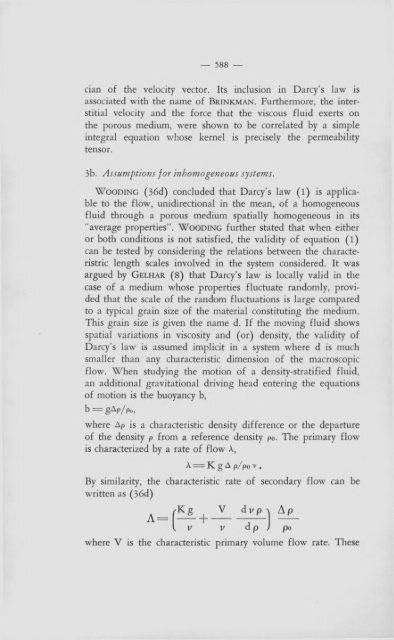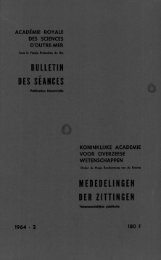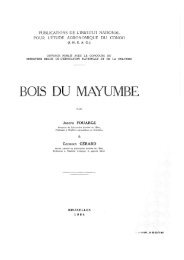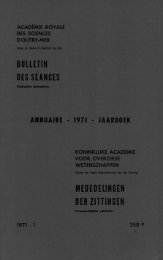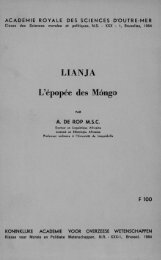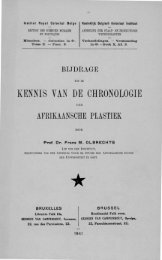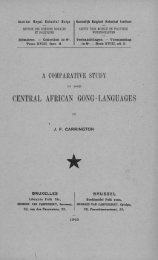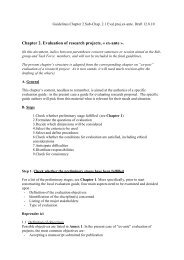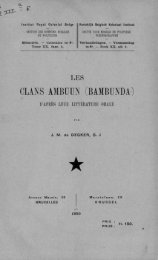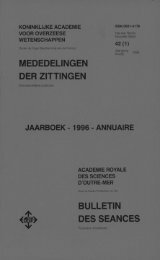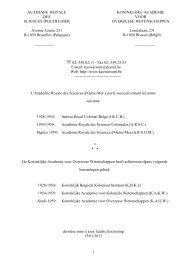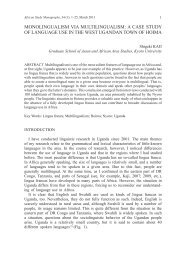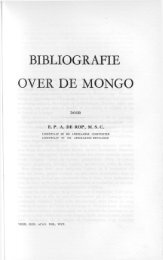(1973) n°3 - Royal Academy for Overseas Sciences
(1973) n°3 - Royal Academy for Overseas Sciences
(1973) n°3 - Royal Academy for Overseas Sciences
You also want an ePaper? Increase the reach of your titles
YUMPU automatically turns print PDFs into web optimized ePapers that Google loves.
— 588 —<br />
dan of the velocity vector. Its inclusion in Darcy’s law is<br />
associated with the name of B r i n k m a n . Furthermore, the interstitial<br />
velocity and the <strong>for</strong>ce that the viscous fluid exerts on<br />
the porous medium, were shown to be correlated by a simple<br />
integral equation whose kernel is precisely the permeability<br />
tensor.<br />
3b. Assumptions <strong>for</strong> inhomogeneous systems.<br />
W o o d i n g (36d) concluded that Darcy’s law ( l ) is applicable<br />
to the flow, unidirectional in the mean, of a homogeneous<br />
fluid through a porous medium spatially homogeneous in its<br />
“average properties”. W o o d i n g further stated that when either<br />
or both conditions is not satisfied, the validity of equation ( l)<br />
can be tested by considering the relations between the characte-<br />
ristric length scales involved in the system considered. It was<br />
argued by G e l h a r (8) that Darcy’s law is locally valid in the<br />
case of a medium whose properties fluctuate randomly, provided<br />
that the scale of the random fluctuations is large compared<br />
to a typical grain size of the material constituting the medium.<br />
This grain size is given the name d. If the moving fluid shows<br />
spatial variations in viscosity and (or) density, the validity of<br />
Darcy’s law is assumed implicit in a system where d is much<br />
smaller than any characteristic dimension of the macroscopic<br />
flow. W hen studying the motion of a density-stratified fluid,<br />
an additional gravitational driving head entering the equations<br />
of motion is the buoyancy b,<br />
b = g AP / f S<br />
w h ere Ap is a characteristic d en sity d iffe ren ce or th e departure<br />
o f th e d en sity p from a referen ce d en sity po. T h e prim ary flo w<br />
is characterized by a rate o f flo w A,<br />
A. = K g A p/po V .<br />
By similarity, the characteristic rate of secondary flow can be<br />
written as (36d)<br />
A fKg j V dyp\ Ap_<br />
I V v d p J po<br />
where V is the characteristic primary volume flow rate. These


